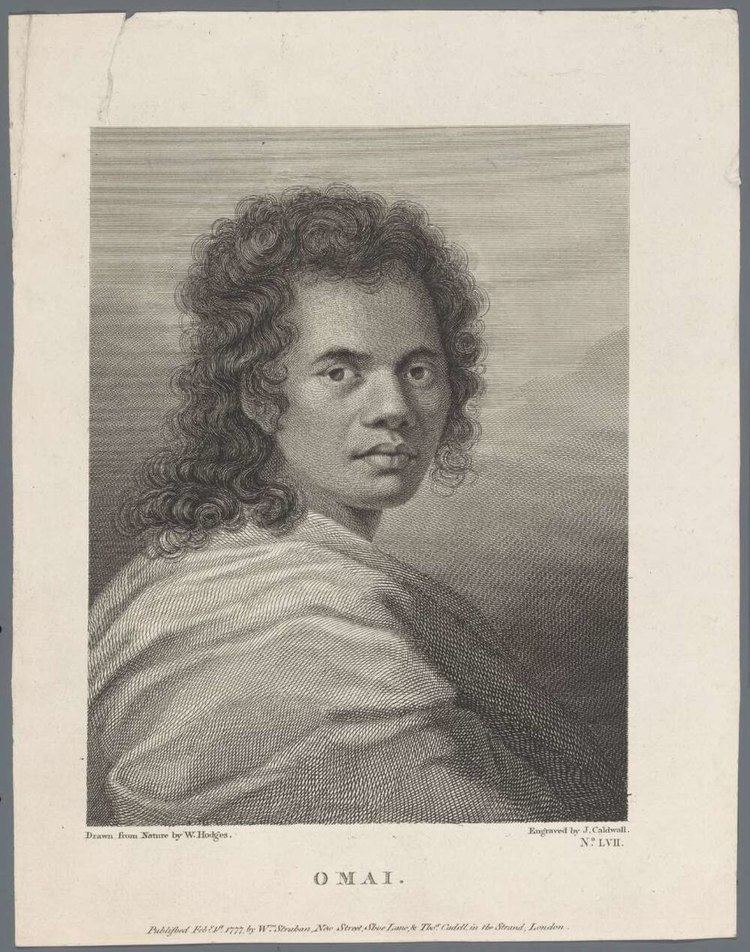 | ||
The Tahitians, or Maohis, are indigenous peoples of Tahiti and thirteen other Society Islands, as well as the modern population of these lands of mixed ancestry (French: demis). The Tahitians are one of the most significant indigenous Polynesian peoples of Oceania.
Contents
Map of Tahiti, French Polynesia
Pre-European period and customs
The original Tahitian society was unaware of metal as it was based on Stone Age technology. However, it enabled Tahitians to clear land for cultivation on the fertile volcanic soils and build fishing canoes, their two basic subsistence activities. The tools of the Tahitians when first discovered were made of stone, bone, shell or wood.
The Tahitians were divided into three major classes (or castes): ari'i, ra'atira and manahune. Ari'i were relatively few in number while manahune constituted the bulk of population and included some members who played essential roles in the society. It is estimated that by the first contact with Europeans in 1767 the population of Tahiti was no more than 40,000 while other Society Islands held probably 15,000-20,000 natives.
Tahitians divided the day into the periods of daylight (ao) and darkness (pō). There was also a concept of irrational fear called mehameha, translated as uncanny feelings. The healers, familiar with herbal remedies, were called ta'ata rā'au or ta'ata rapa'au. In the 19th century Tahitians added the European medicine to their practice. The most famous Tahitian healer Tiurai, of ari'i, died aged 83 during the influenza outbreak on Tahiti in 1918.
Colonization
When British Captain Samuel Wallis "discovered" Tahiti on 18 June 1767, the natives were eager to trade, especially in iron nails unknown to them. Philibert Commerçon (1727–1773) in his The Tahitian Savage to the French wrote: "They have a fruit instead of bread. Their other foods are equally simple". Commerçon also described the practice of public sex, which he said Tahitians engaged in while being cheered on by applause and musical instruments. In the marital relationships Tahitians closely approached the situation where all women were the wives of men and the wife of every man was also the wife of his friend. Louis Antoine de Bougainville described a scene, where a young girl came on board, placed herself upon the quarter deck and carelessly dropt the cloth. Charles Darwin also wrote on Tahitians during the voyage on the Beagle: "There is a mildness in the expression of their countenances, which at once banishes the idea of a savage; and an intelligence, which shows they are advancing in civilization".
The European ships however brought such diseases for which Tahitians had little or no immunity, such as dysentery, smallpox, scarlet fever, typhoid fever and tuberculosis. As a result of these changes by 1797 the population of Tahiti decreased to 16,000 from estimated 40,000 in 1767, when the first European ship HMS Dolphin touched on the island. The 1881 census enumerated about 5,960 native Tahitians. The recovery continued in spite of a few more epidemics.
Modern times
Three hundred Tahitian volunteers fought in the European theatre of World War II with the Free French Forces.
In the late 1960s and early 1970s Tahitian poets Henri Hiro, Charles Manutahi, Vaitiare and Turo Raapoto spearheaded the anticolonial writing in Tahiti. Hiro's God of Culture implores Oihanu, the Tahitian god of culture and husbandry, to empower the 'new generation'. Three women writers - Michou Chaze, Chantal Spitz and Vaitiare explore the problems of Tahitian identification in contemporary French Polynesia. Tahitian peasants and workers call themselves the 'true Tahitians' (Ta'ata Tahiti Mau) to distinguish from part-Europeans (Ta'ata 'afa Popa'a). At the same time demis quite frequently identify themselves as indigenous people in terms of culture and political affiliation. Such Tahitian activists as Pouvanaa a Oopa, Francis Sanford and Charlie Ching and Catholic bishops Michel-Gaspard Coppenrath and Hubert Coppenrath are of demi ancestry.
Many natives were painted from life by Paul Gauguin, who gave Taitian titles to his works. In Ea haere ia oe (Where Are You Going?), for example, a pensive young girl wears the white flower tiare behind her left ear, signifying readiness to take a lover.
Tahitians are French citizens and are represented by two elected deputies to the French National Assembly and one representative in the French Senate. Tahitians vote by universal adult suffrage in all major French elections.
